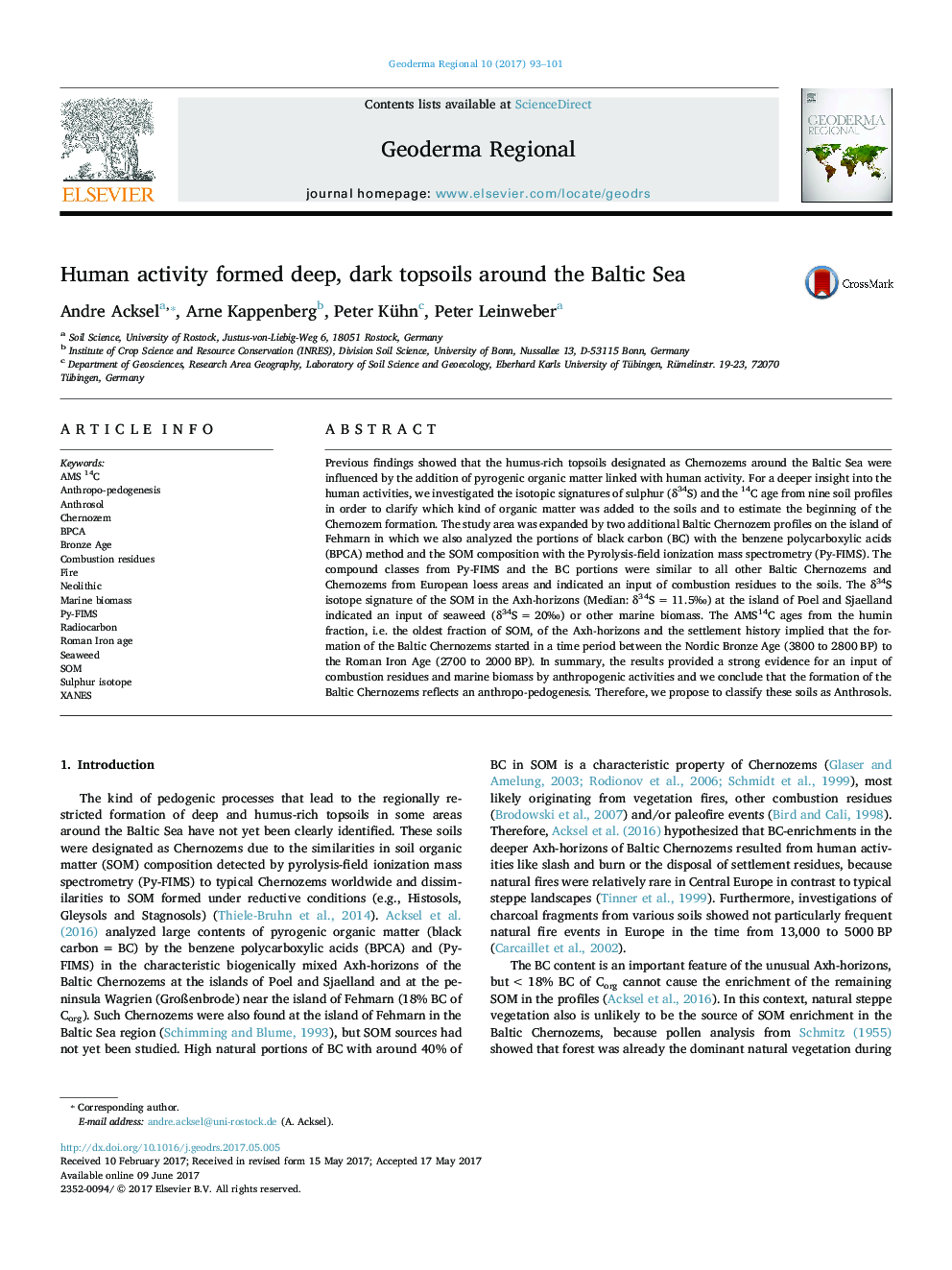| کد مقاله | کد نشریه | سال انتشار | مقاله انگلیسی | نسخه تمام متن |
|---|---|---|---|---|
| 5758649 | 1623006 | 2017 | 9 صفحه PDF | دانلود رایگان |
عنوان انگلیسی مقاله ISI
Human activity formed deep, dark topsoils around the Baltic Sea
ترجمه فارسی عنوان
فعالیت های انسانی خاک های عمیق و تاریک در اطراف دریای بالتیک را تشکیل می دهد
دانلود مقاله + سفارش ترجمه
دانلود مقاله ISI انگلیسی
رایگان برای ایرانیان
کلمات کلیدی
موضوعات مرتبط
مهندسی و علوم پایه
علوم زمین و سیارات
فرآیندهای سطح زمین
چکیده انگلیسی
Previous findings showed that the humus-rich topsoils designated as Chernozems around the Baltic Sea were influenced by the addition of pyrogenic organic matter linked with human activity. For a deeper insight into the human activities, we investigated the isotopic signatures of sulphur (δ34S) and the 14C age from nine soil profiles in order to clarify which kind of organic matter was added to the soils and to estimate the beginning of the Chernozem formation. The study area was expanded by two additional Baltic Chernozem profiles on the island of Fehmarn in which we also analyzed the portions of black carbon (BC) with the benzene polycarboxylic acids (BPCA) method and the SOM composition with the Pyrolysis-field ionization mass spectrometry (Py-FIMS). The compound classes from Py-FIMS and the BC portions were similar to all other Baltic Chernozems and Chernozems from European loess areas and indicated an input of combustion residues to the soils. The δ34S isotope signature of the SOM in the Axh-horizons (Median: δ34S = 11.5â°) at the island of Poel and Sjaelland indicated an input of seaweed (δ34S = 20â°) or other marine biomass. The AMS14C ages from the humin fraction, i.e. the oldest fraction of SOM, of the Axh-horizons and the settlement history implied that the formation of the Baltic Chernozems started in a time period between the Nordic Bronze Age (3800 to 2800 BP) to the Roman Iron Age (2700 to 2000 BP). In summary, the results provided a strong evidence for an input of combustion residues and marine biomass by anthropogenic activities and we conclude that the formation of the Baltic Chernozems reflects an anthropo-pedogenesis. Therefore, we propose to classify these soils as Anthrosols.
ناشر
Database: Elsevier - ScienceDirect (ساینس دایرکت)
Journal: Geoderma Regional - Volume 10, September 2017, Pages 93-101
Journal: Geoderma Regional - Volume 10, September 2017, Pages 93-101
نویسندگان
Andre Acksel, Arne Kappenberg, Peter Kühn, Peter Leinweber,
